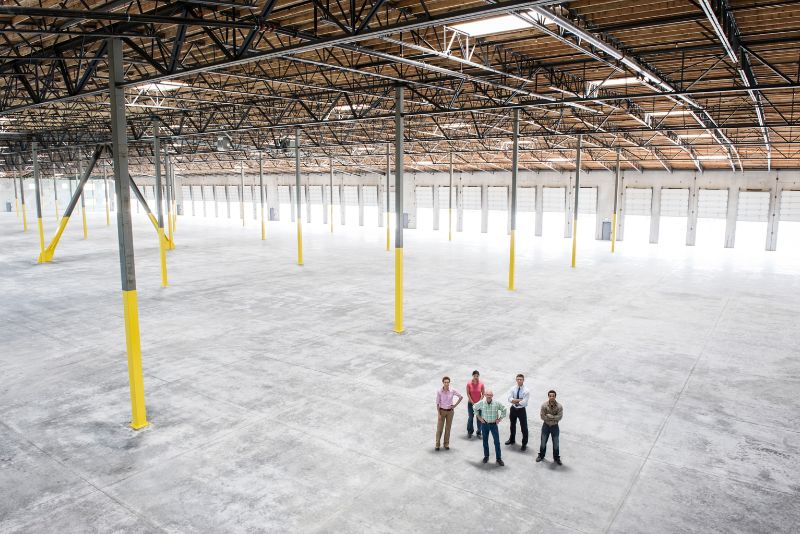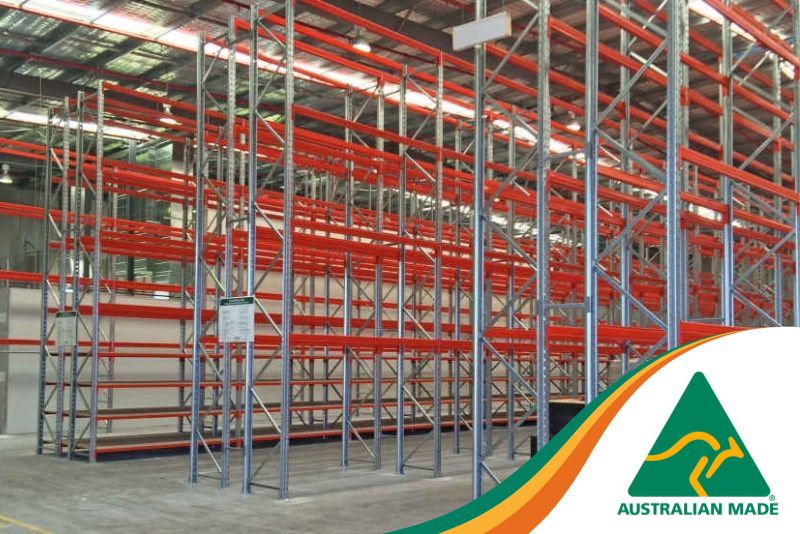
In today’s rapidly evolving warehousing and logistics industries, choosing the right pallet racking system is crucial for optimising operations, enhancing storage capacity, and improving overall efficiency. However, with a variety of racking options available, selecting the most appropriate system can be daunting. It requires a thoughtful assessment of several critical factors that impact both immediate needs and long-term operations.
This guide will walk you through essential questions every organisation should consider when deciding on a pallet racking solution. These inquiries will help you determine the specific requirements of your warehouse, including inventory characteristics, space utilisation, and operational dynamics. Whether you’re considering the weight and size of your products, the type of inventory management system to employ, or the frequency with which you’ll access stored items, each aspect plays a pivotal role in selecting a racking system that aligns with your business objectives and operational strategies. The below questions will help you make an informed decision that maximises efficiency and minimises costs in your warehousing operations.
Questions To Ask Your Organisation
1. What Are the Dimensions and Weight of Your Products?
Before selecting a pallet racking system, understanding the size and weight of the items you plan to store is crucial. Different racking systems have varying capacities and configurations. Knowing your product dimensions and weight will help you choose a system that can safely and efficiently accommodate your inventory.
2. What is the Total Volume of Products to be Stored?
Assess the total volume of items that your facility will store. This will help determine the density of the storage system you need. Whether it’s a high-density system like drive-in racks for bulk storage or a selective racking system for easier access depends on how much inventory you need to manage.
3. What Type of Inventory Management System Do You Use?
Your choice of racking may be influenced by the type of inventory management system you employ, such as FIFO (First In, First Out) or LIFO (Last In, First Out). Selective racks are ideal for high accessibility FIFO systems, while drive-in or push-back racks might be better for LIFO systems.
4. How Frequently Will You Access the Items?
Consider the frequency of item retrieval. If your operations require frequent access to pallets, you’ll need a system that allows easy access, like selective racking. For less frequent access, systems like drive-in racking, which allow pallets to be stored deeply, might be more appropriate.
5. What Are the Limitations of Your Warehouse Space?
Warehouse dimensions, including ceiling height and floor layout, will significantly influence the type of racking suitable for your space. Measure your space accurately and consider any physical limitations, such as columns or irregular shapes, which might affect the installation of certain racking types.
6. What is Your Budget?
Finally, consider your budget. Different racking systems come at varying costs, not just for initial purchase and installation but also for long-term maintenance and warehouse space required. Weigh the upfront costs against the operational benefits to find a system that offers the best value for your investment.
Understanding LIFO and FIFO Pallet Racking Systems
What is FIFO Pallet Racking?

FIFO, or First In, First Out, is a storage system that ensures that the first items stored are the first ones to be retrieved. This system is particularly useful for storing items with expiration dates like food and other perishable goods to prevent spoilage and obsolescence.
Types of FIFO Systems:
Selective Pallet Racking: This is the most common type of pallet racking and allows for easy access to every pallet. It’s ideal for warehouses that store a wide variety of items with different SKUs.
Pallet Flow / Live Racks: These utilise gravity rollers to move pallets from one end of the shelf to the other. As a pallet is removed from the front, the one behind it rolls forward in its place, making it a highly efficient system for FIFO operations.
Benefits of FIFO:
- Reduces spoilage by ensuring that older stock is used first.
- Easier to manage inventory turns and stock control.
- Ideal for perishable goods and items with expiration dates.
What is LIFO Pallet Racking?

LIFO, or Last In, First Out, is a storage system where the last items stored are the first to be retrieved. This system is typically used in environments where perishability is not an issue and where storage density is more important than rotation.
Types of LIFO Systems:
Drive-In Pallet Racking: This system allows forklifts to drive directly into the rack to load or retrieve pallets, which are stored on rails running throughout the system. It maximises storage space by reducing the number of aisles.
Push-Back Pallet Racking: Each pallet is placed on a cart that rides on rails. When a new pallet is loaded, it pushes the previous pallet back into the rack. This system is ideal for storing bulk quantities of the same item and can store pallets 2-5 deep.
Double Deep Racking: This type involves placing one pallet behind another on the same side of the aisle, effectively doubling the storage depth. Access to rear pallets requires the removal of the front pallets, which makes it suitable for items that don’t need immediate picking. This system enhances storage capacity while maintaining a better selectivity than drive-in racks, but still requires the use of specialised pallet handling equipment with telescopic fork attachments.
Benefits of LIFO:
- Maximises storage space by reducing the need for multiple aisles.
- Cost-effective for materials that do not require rotation.
- Ideal for bulk storage and handling large quantities of the same item.
- Choosing Between FIFO and LIFO

The decision between using FIFO or LIFO racking systems depends on several factors:
Type of Inventory: Perishable goods often require FIFO, while non-perishable goods are often stored in a LIFO system.
Warehouse Space: If space is at a premium, LIFO systems like drive-in or push-back racking can maximise storage density.
Accessibility Needs: FIFO systems provide easier access to a broader range of products, essential for operations handling a large variety of SKUs.
Cost Considerations: Determine if the efficiency of FIFO or the space-saving benefits of LIFO offers better cost management based on operational needs.
1. When to Consider LIFO
Ideal for Non-Perishable Items:
LIFO is best suited for products that do not have an expiration date and are not subject to obsolescence, such as construction materials or non-perishable goods. This system reduces the need for extensive warehousing space by allowing items to be stored deeply.
High-Density Storage Needs:
LIFO is compatible with high-density storage systems like drive-in or push-back racks, which maximise storage space by reducing aisle count and enabling deep storage capabilities.
2. When to Consider FIFO
Perishable Goods:
For items with expiration dates, such as food and pharmaceuticals, FIFO is essential. It ensures that the oldest stock (first in) is sold or used before newer stock (first out), thereby reducing waste and spoilage.
High Volume, Varied Inventory:
Businesses with high turnover rates and a broad product range benefit from FIFO as it facilitates better inventory accuracy and management, reducing the likelihood of dead stock.
Quality Control:
Industries where product quality can degrade over time (like chemicals or electronics) often use FIFO to ensure that customers receive products in the best possible condition.
3. When to Consider High-Density Storage
Limited Space:
In urban areas, cold rooms or in facilities where expansion is not feasible, high-density storage systems maximise the use of vertical and horizontal space. Systems like drive-in racking are useful to store more goods in a constrained space.
Bulk Items:
For storing large quantities of a single item, high-density options are ideal. These systems reduce the space required per unit of goods stored, which can significantly decrease storage costs.
Low Accessibility Requirements:
When frequent access to all items isn’t necessary, high-density storage can be more economical. This is typical in scenarios where bulk amounts of the same item are processed.
4. When to Prioritise Accessibility
High Pick Frequency:
Operations that require frequent picking of different items, such as e-commerce warehouses, benefit from systems that prioritise accessibility. Selective racking or similar setups ensure that workers can quickly and easily retrieve items.
Just-in-Time (JIT) Manufacturing:
In JIT systems, where production lines are fed by frequent deliveries of small quantities of parts, easy access to various inventory items is crucial to keep operations smooth and responsive.
Varied Product Handling:
Facilities handling a wide range of products, particularly those with varying dimensions and turnover rates, need accessible storage solutions to efficiently manage daily operations and adapt to changing inventory needs.
Questions to help you determine the appropriate pallet racking solution
- What are the dimensions and weight of the items to be stored?
- What is the average size and weight of your pallets?
- Are there different sizes and weights that need accommodation within the same system?
- What type of products are you storing?
- Are the products perishable or non-perishable?
- Do the products have any special handling or storage requirements (e.g., hazardous materials)?
- What is the volume of inventory that needs to be stored?
- How many pallets or units need to be stored at maximum capacity?
- Do you expect this volume to increase in the near future?
- What is the turnover rate of your inventory?
- How frequently do you cycle through your entire inventory?
- Do you use a FIFO (First In, First Out) or a LIFO (Last In, First Out) system?
- What are your retrieval needs?
- How often will you need to access individual pallets?
- Do you require quick and easy access to all pallets, or can some be stored for longer periods?
- What are the height and space constraints of your warehouse?
- Measure storage space – check article here
- Are there any physical obstacles (columns, doors, etc.) that need to be considered in the layout?
- What are your budget constraints?
- What is your budget for the racking system including installation?
- Have you considered the costs of maintenance, warehouse space required and potential future modifications?
- What type of loading equipment will be used?
- What kind of forklifts or material handling equipment will be used in the warehouse?
- Do these equipment have specific space requirements for operation (turning radius, aisle width)?
- What are the safety requirements?
- What are the local codes and regulations regarding warehouse storage?
- What safety features are necessary (e.g., fire safety, seismic requirements)?
- How flexible does the racking system need to be?
- Do you need a modular system that can be easily modified as your needs change?
- How often do you anticipate changes to the layout or design of the storage system?
- What is the expected lifespan of the racking system?
- What quality and durability are you expecting from the racking system?
- Are the materials and design suited to withstand the warehouse environment over time?
- Do you need specialised storage features?
- Do you require any special features such as drive-in racks, push-back racks, or pallet flow racks?
- Are there specific industry-related needs (e.g., cold storage, bulk storage)?
Selecting the right pallet racking system for your warehouse is a crucial decision that can significantly impact your operational efficiency, safety, and bottom line. By carefully considering the outlined questions, you can tailor your choice to perfectly match the unique needs of your storage environment. Macrack, with its expertise and experience in manufacturing high-quality pallet racking systems in Brisbane, is perfectly equipped to provide you with a solution that not only meets your current requirements but also adapts to future growth and changes. Whether you prioritise accessibility, density, cost-efficiency, or all of the above, Macrack offers the reliability and quality assurance that can help transform your warehouse into a model of efficiency and effectiveness. Choose Macrack for a pallet racking solution that stands the test of time and the rigours of your business demands. Contact our team today for a free design and quote.



